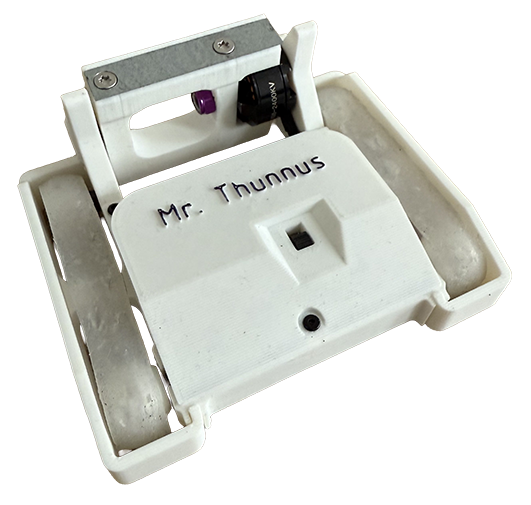Antweight

ANT Weight Category
The ANT weight category is one of the smallest official robotic weight classes. Its appeal lies in its extremely low weight limit and the need for a highly sophisticated engineering approach.
- Weight limit: 150 grams as standard.
- Dimensions: robots must usually fit into a cube with sides measuring 4 inches (10.16 cm), but the exact dimensional limits may depend on the competition organizer.
Due to the low weight, the construction is a real challenge. Manufacturers and hobby designers mainly choose lightweight materials – most often:
- Plastics: polycarbonate (Lexan), ABS, or 3D-printed parts made of PLA+/PETG. These are mainly used for chassis and protective covers.
- Composites: carbon fiber, Kevlar, laminates – to achieve low weight and high durability.
- Metals: where durability is needed (e.g., front plows, impact weapons), aluminum, titanium, or thin steel plates are used.
- Electronics: thanks to the spread of FPV drones, ultralight motors and controllers that comply with weight limits are used.
The design of ANT weight robots is therefore always a compromise between durability, performance, and weight. Creators must carefully select components and weapons so that they fit within the limits while still having a chance to succeed in the arena.
Rules for the ANT Weight category
1.1. Maximum robot weight
The standard upper limit for ANT weight robots is 150 grams. This limit is basic and applies to most classic designs that use wheels or tracks.
1.2. Shuffle robots
If a robot does not use a classic rolling mechanism (wheels, tracks, rollers) to move, but moves, for example, by vibrating or sliding (so-called shuffle), it receives a small weight advantage.
- In this case, up to 225 grams is allowed.
- This advantage is intended to encourage creative designs with alternative modes of movement, which tend to be more technically complex and less energy efficient.
1.3. Walker robots (walking robots)
Robots that move by walking using mechanical legs have the highest weight allowance.
- The limit is up to 300 grams.
- For the mechanism to be considered true walking, it must not be a simple rotational movement (e.g., a classic servo with an arm). The leg movement must have a non–circular trajectory with variable speed.
- Another condition is that the length of the step must be at least 1.5 times greater than its height – in other words, the robot must really “walk” and not just “drag” its legs just above the surface.
These rules motivate designers to develop more complex, realistic walking mechanisms.
1.4. Clusterbot (multi-part robots)
A robot may consist of several independent parts that together form a team – a so-called Clusterbot. In this case, the following rules apply:
- The total weight of all parts together must not exceed the permitted limit (depending on whether it is a rolling, shuffle, or walker mechanism).
- If the Clusterbot consists of a combination of robots with rolling and non-rolling movement, special calculations are used to determine the weight limit of each part:
Formulas for combined teams:
- Weight of rolling robots = 150 – (2/3 × Total weight of non-rolling robots)
- Weight of non-rolling robots = 1.5 × (150 – Total weight of rolling robots)
These calculations ensure a balance between more complex mechanisms and classic designs, and no one is unfairly advantaged.
Overall, these rules balance simple and effective designs (classic wheeled robots) with more creative but complex solutions (walking and shuffle robots). The result is a diverse and attractive competition category where both minimalist ultralight machines and technical curiosities with legs can succeed side by side.
Turn your ideas into reality with our components. You will find everything you need to build your champion in our e-shop.

